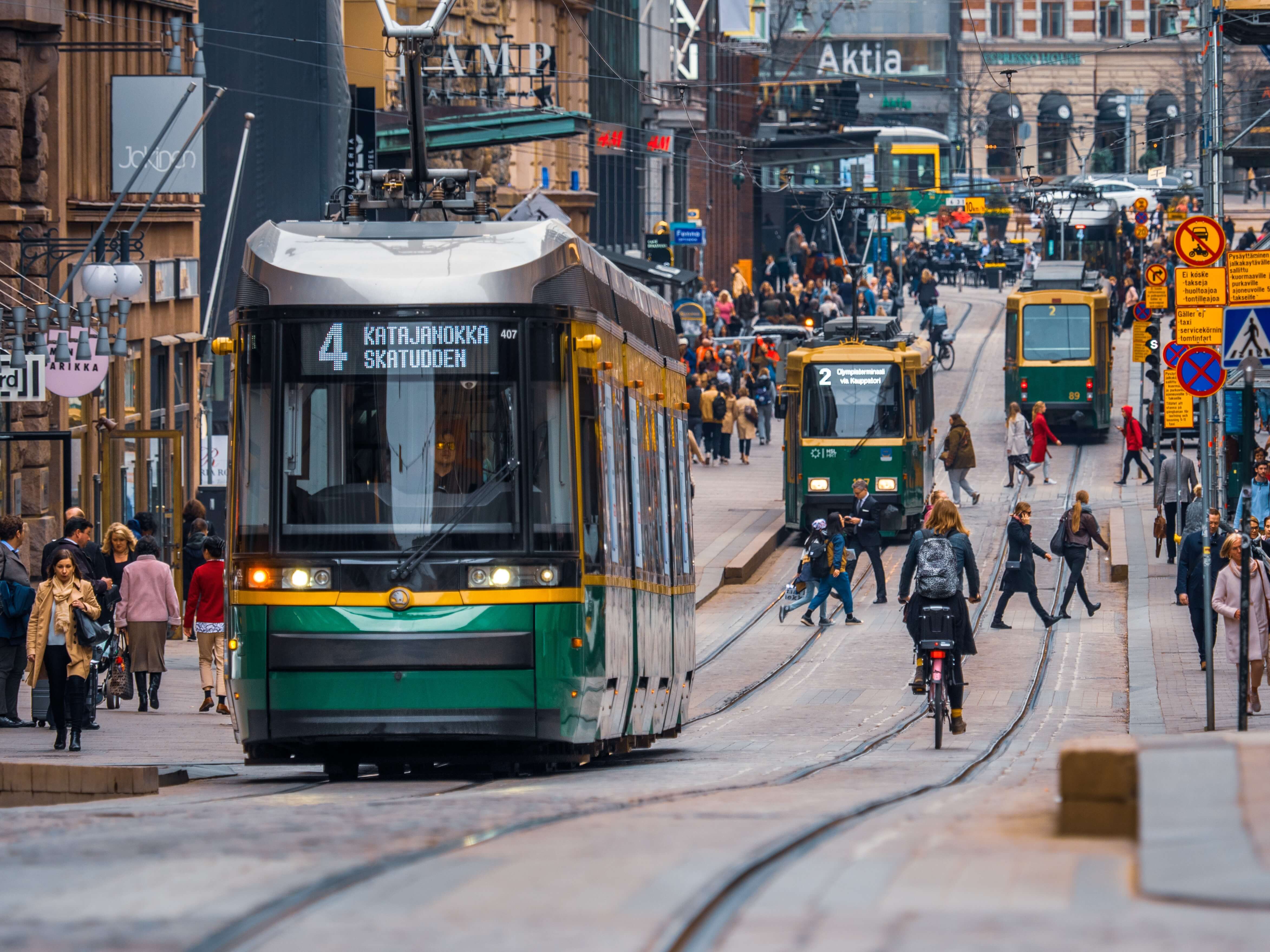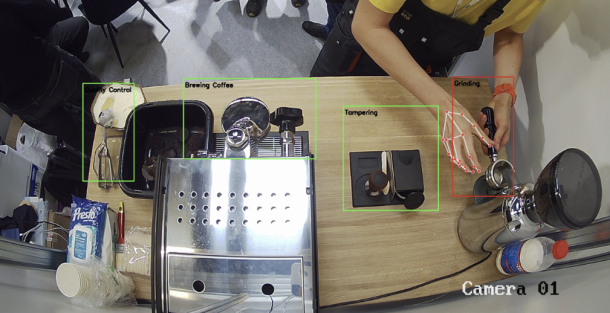From Lean Six Sigma to Smart City Success Stories: Applying Quality Management Principles to Urban Planning
Urbanization is rapidly increasing across the globe, leading to numerous challenges such as traffic congestion, air pollution, and waste management. To address these issues, cities are turning towards smart city solutions. In recent years, cities around the world have been embracing the concept of "smart cities" to improve their quality of life, sustainability as well as economic competitiveness. At the heart of the smart city movement lies the integration of technology into urban planning and management. It helps to create more efficient, responsive and livable cities. Lean Six Sigma can help cities improve their services, reduce costs, and enhance the quality of life for their residents.
However, technology alone is not enough to create successful smart cities. To achieve their goals, cities must also apply principles of quality management, such as Lean Six Sigma, to their planning and implementation processes. Let’s explore how Lean Six Sigma and other quality management principles can help modern cities achieve their smart city objectives, with a focus on real-world success stories from around the world outside of the well-known cities of Amsterdam, Barcelona, Singapore, Songdo and Copenhagen.
Lean Six Sigma: A Brief Introduction
Before diving into smart cities, let's first understand what Lean Six Sigma is and how it works. Lean Six Sigma is a methodology that combines two separate approaches to quality management: Lean and Six Sigma. Lean focuses on reducing waste and increasing efficiency in processes, while Six Sigma focuses on reducing defects and improving quality. Together, they create a powerful framework for continuous improvement in any organization, including cities.
The Lean Six Sigma methodology is based on a five-step process known as DMAIC, which stands for Define, Measure, Analyze, Improve, and Control. In the Define phase, the problem or opportunity is identified, and goals are set. In the Measure phase, data is collected and analyzed to understand the current state of the process. In the Analyze phase, the root causes of problems are identified, and potential solutions are explored. In the Improve phase, solutions are implemented, and the process is optimized. Finally, in the Control phase, the process is monitored to ensure that improvements are sustained over time.
Applying Lean Six Sigma to Smart Cities
Now that we have a basic understanding of Lean Six Sigma, let's explore how it can be applied to smart cities. Smart cities are complex systems that involve multiple stakeholders, technologies, and processes. As such, they can benefit greatly from a structured and data-driven approach to planning and implementation.
One of the key challenges that smart cities face is the integration of different technologies and systems. For example, a smart transportation system may require the integration of sensors, data analytics, and communication technologies. Each of these components has its own challenges and requirements, and failure to integrate them effectively can result in inefficiencies, delays, and even safety risks. By applying the DMAIC process of Lean Six Sigma, cities can identify and address these challenges systematically, ensuring that each component is integrated effectively and efficiently.
Another challenge that smart cities face is the need to balance competing objectives, such as sustainability, economic growth, and social equity. For example, a smart energy system may need to balance the need for renewable energy sources with the need for affordable and reliable energy for all residents. By using the data-driven approach of Lean Six Sigma, cities can identify and prioritize their objectives, and develop solutions that achieve the best possible balance.
Success Stories from Around the World
Smart Kalasatama
One city that has successfully applied Lean Six Sigma to its smart city initiatives is Helsinki, Finland. In 2016, Helsinki launched a program called Smart Kalasatama, which aimed to create a sustainable and livable neighborhood in the city's eastern harbor area. The program used Lean Six Sigma principles to identify and prioritize areas for improvement, and develop solutions to address them.

One of the key initiatives of the program was the development of a Smart Mobility Lab, which aimed to improve the efficiency and safety of transportation in the neighborhood. Using data analytics and process improvement techniques, the lab was able to optimize traffic flows and reduce congestion, resulting in improved safety and reduced travel times. The program also included initiatives to improve waste management, energy efficiency, and community engagement, all of which were guided by Lean Six Sigma principles.
Charming Adelaide
Another city that has successfully applied Lean Six Sigma to its smart city initiatives is Adelaide, Australia. In 2015, Adelaide launched a program called Smart City Adelaide, which aimed to create a more sustainable, livable, and innovative city. The program used Lean Six Sigma principles to identify and prioritize areas for improvement, and develop solutions to address them.
One of the key initiatives of the program was the development of a Smart Lighting project, which aimed to improve the efficiency and sustainability of the city's lighting system. Using data analytics and process improvement techniques, the project was able to optimize the city's lighting system, resulting in reduced energy consumption and cost savings. The program also included initiatives to improve waste management, water management, and community engagement, all of which were guided by Lean Six Sigma principles.
Eye-catching Dubai
A third city that has successfully applied Lean Six Sigma to its smart city initiatives is Dubai, United Arab Emirates. In 2014, Dubai launched a program called Smart Dubai, which aimed to create a city that is both smart and sustainable. The program used Lean Six Sigma principles to identify and prioritize areas for improvement, and develop solutions to address them.

One of the key initiatives of the program was the development of a Smart Parking project, which aimed to improve the efficiency and convenience of the city's parking system. Using data analytics and process improvement techniques, the project was able to optimize the city's parking system, resulting in reduced congestion and improved customer satisfaction. The program also included initiatives to improve waste management, energy efficiency, and community engagement, all of which were guided by Lean Six Sigma principles.
Modern and spacious Taipei
Taipei, the capital of Taiwan, is an example of a successful smart city project that has implemented quality management principles in urban planning. In 2018, Taipei launched the "Smart City Operation Center," which utilizes big data and AI to monitor and analyze the city's operations. The center has optimized garbage collection and reduced food waste by analyzing the waste generation patterns and introducing new collection methods. The city also implemented a smart bus system, which utilizes GPS technology to optimize bus routes, reducing wait times and increasing efficiency.
Green Milton Keynes
Milton Keynes in the United Kingdom is another smart city success story that has utilized Lean Six Sigma principles. The city implemented a "Smart City Program" in 2018 that focused on improving transportation, energy efficiency and public safety. The program introduced smart traffic management systems that utilize real-time data to optimize traffic flow, reducing congestion and air pollution. The city also introduced a smart energy management system that uses AI algorithms to optimize energy usage and reduce carbon emissions. The program has resulted in a 16% reduction in energy usage across the city.
Marvelous Seoul
Seoul, the capital of South Korea, is an example of a city that has utilized Lean Six Sigma principles in its transportation system. In 2011, the city introduced the "Smart Transportation System," which aimed to improve traffic flow and reduce congestion. The system uses real-time data to optimize traffic signals and reduce wait times at intersections. The system has resulted in a 26% reduction in travel time and a 40% reduction in accidents.
Atmospheric Tallinn
Tallinn, the capital of Estonia, is another smart city success story that has utilized Lean Six Sigma principles. In 2017, the city launched the "Smart City Program," which focused on improving transportation, energy efficiency, and citizen engagement. The program introduced a smart public transportation system that utilizes real-time data to optimize routes, reduce wait times, and increase efficiency. The program also introduced a smart energy management system that uses AI algorithms to optimize energy usage and reduce carbon emissions. The program has resulted in a 20% reduction in energy usage across the city.

The success stories of smart cities
The success stories of smart cities around the world demonstrate the importance of utilizing quality management principles such as Lean Six Sigma in urban planning. By optimizing processes, utilizing data and applying innovation, smart cities can provide better services and solutions to citizens. These case studies highlight that Lean Six Sigma principles can be applied in a variety of areas, including transportation, waste management, energy efficiency and citizen engagement. As urbanization continues to increase, the adoption of smart city solutions and quality management principles will be crucial in creating sustainable and livable cities for all citizens.
All the stories are usually based on a combination of factors. These factors include the use of advanced technologies, the collection and analysis of data, citizen engagement and the application of quality management principles.
Advanced Technologies
Smart cities use advanced technologies to optimize their operations and provide better services to citizens. These technologies include the Internet of Things (IoT), artificial intelligence (AI), machine learning (ML) and big data analytics. For example, smart traffic management systems use real-time data from IoT sensors to optimize traffic flow, reducing congestion and air pollution. Smart energy management systems use AI algorithms to optimize energy usage and reduce carbon emissions.

Data Collection and Analysis
Smart cities collect and analyze data to identify inefficiencies in their operations and optimize their processes. They use data to gain insights into citizen behavior, traffic patterns, energy consumption, and waste generation, among other things. By analyzing this data, smart cities can make informed decisions and develop targeted solutions to address specific challenges.
Citizen Engagement
Smart cities prioritize citizen engagement to ensure that their solutions meet the needs of their citizens. They involve citizens in the planning and implementation of smart city projects and use feedback to improve their operations. Citizen engagement can take many forms, such as public forums, surveys, and social media platforms.
Quality Management Principles
Smart cities also apply quality management principles, such as Lean Six Sigma, to urban planning. These principles help them identify inefficiencies in their operations, optimize their processes, and deliver better services to their citizens. By applying quality management principles, smart cities can eliminate waste, reduce defects, and improve customer satisfaction.












